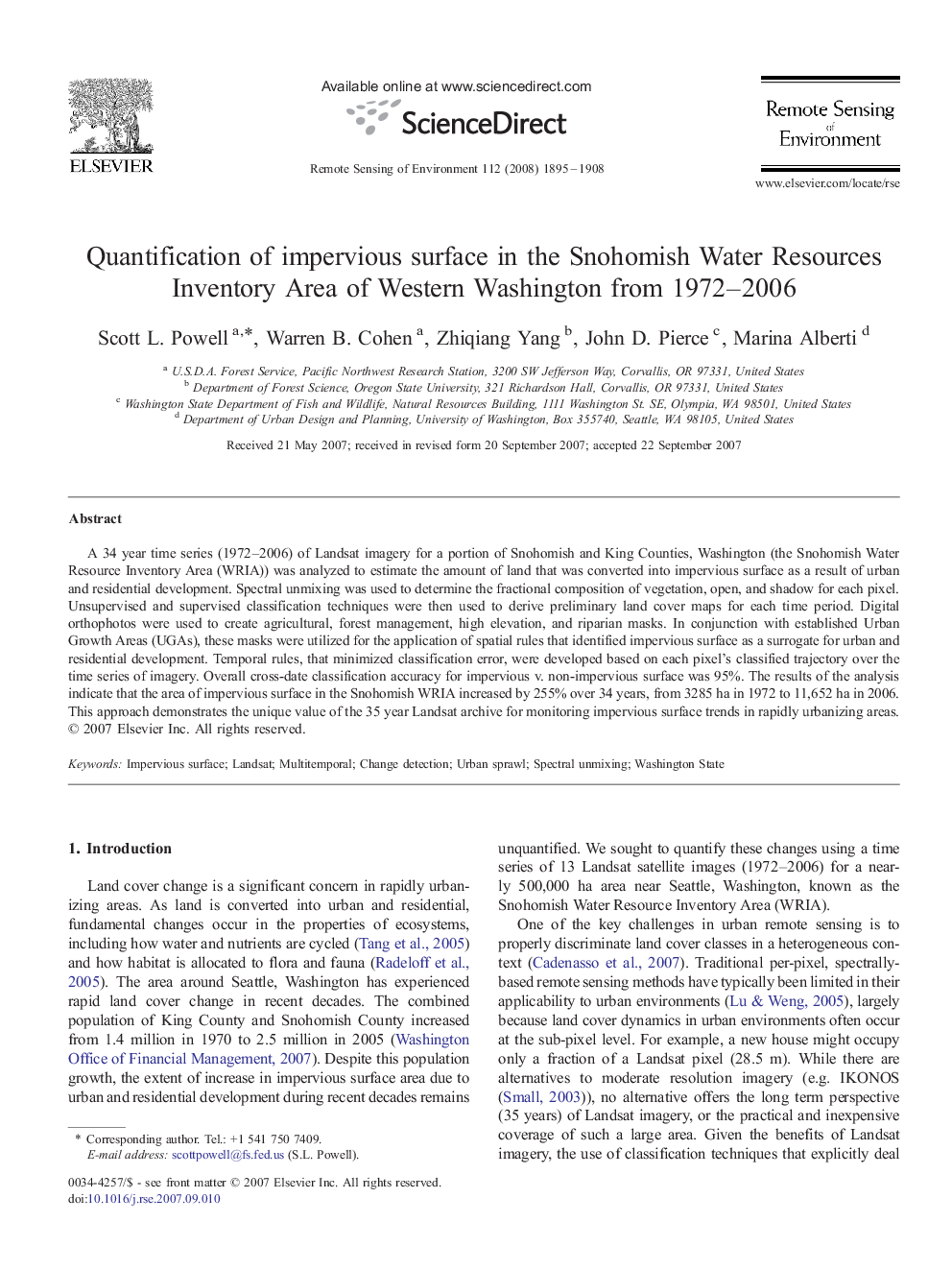| Article ID | Journal | Published Year | Pages | File Type |
|---|---|---|---|---|
| 4460408 | Remote Sensing of Environment | 2008 | 14 Pages |
A 34 year time series (1972–2006) of Landsat imagery for a portion of Snohomish and King Counties, Washington (the Snohomish Water Resource Inventory Area (WRIA)) was analyzed to estimate the amount of land that was converted into impervious surface as a result of urban and residential development. Spectral unmixing was used to determine the fractional composition of vegetation, open, and shadow for each pixel. Unsupervised and supervised classification techniques were then used to derive preliminary land cover maps for each time period. Digital orthophotos were used to create agricultural, forest management, high elevation, and riparian masks. In conjunction with established Urban Growth Areas (UGAs), these masks were utilized for the application of spatial rules that identified impervious surface as a surrogate for urban and residential development. Temporal rules, that minimized classification error, were developed based on each pixel's classified trajectory over the time series of imagery. Overall cross-date classification accuracy for impervious v. non-impervious surface was 95%. The results of the analysis indicate that the area of impervious surface in the Snohomish WRIA increased by 255% over 34 years, from 3285 ha in 1972 to 11,652 ha in 2006. This approach demonstrates the unique value of the 35 year Landsat archive for monitoring impervious surface trends in rapidly urbanizing areas.
